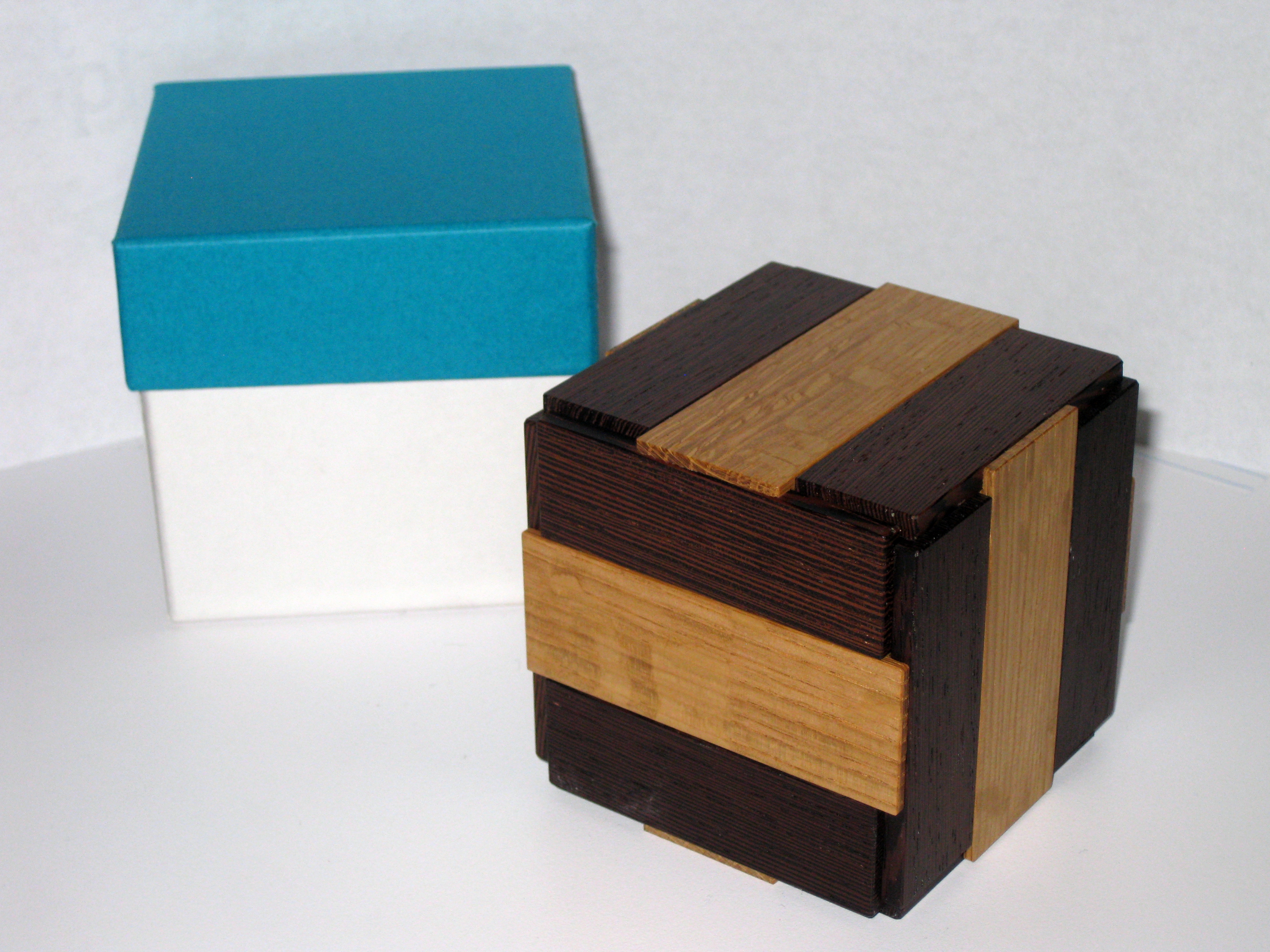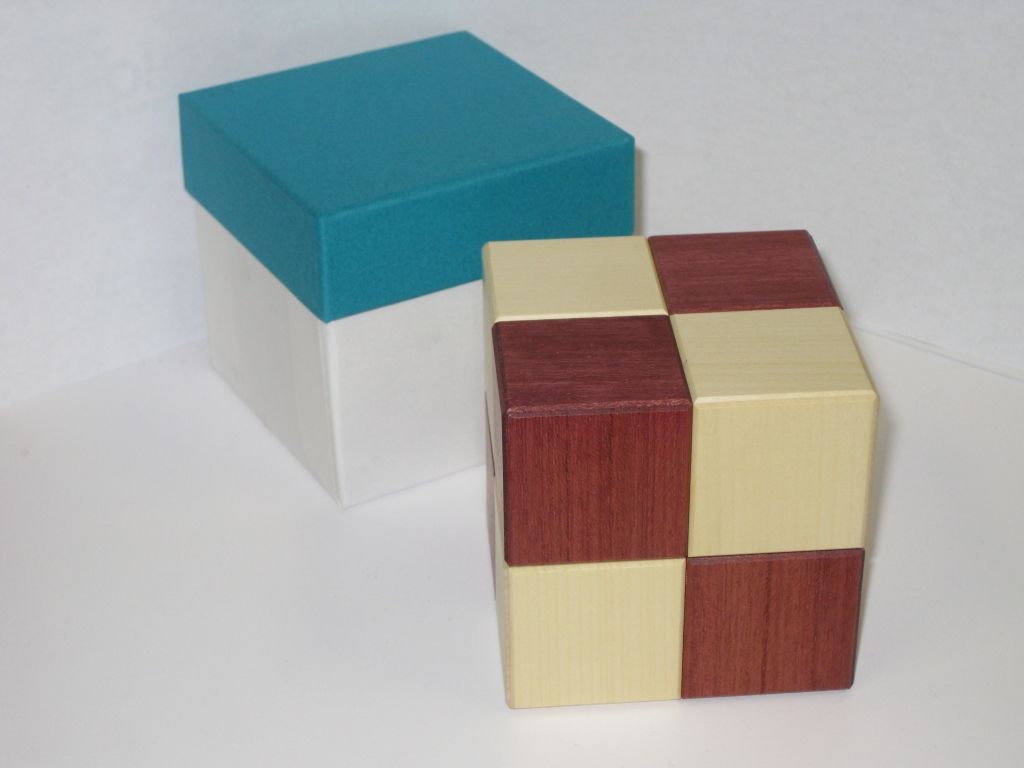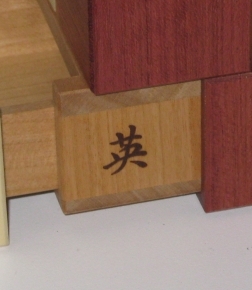It’s about time I got round to reviewing the 2012 Karakuri Christmas presents. I think I’ve left it long enough that people will have been able to play with them all and not have me spoil anything. One of the really interesting things about the membership is the Christmas present(s) and not knowing what you’ll get, gut in general knowing that the boxes will be unique, and made to a very high standard.
Sunflower – Tatsuo Miyamoto
First up for this years reviews is strangely, the last box I acquired. This one popped up on one of the puzzle forums with someone selling it and despite knowing it was a very simple box, I liked the look of it and decided to grab it, especially since the person selling it was asking for the same price as he’d paid for it direct from Karakuri!
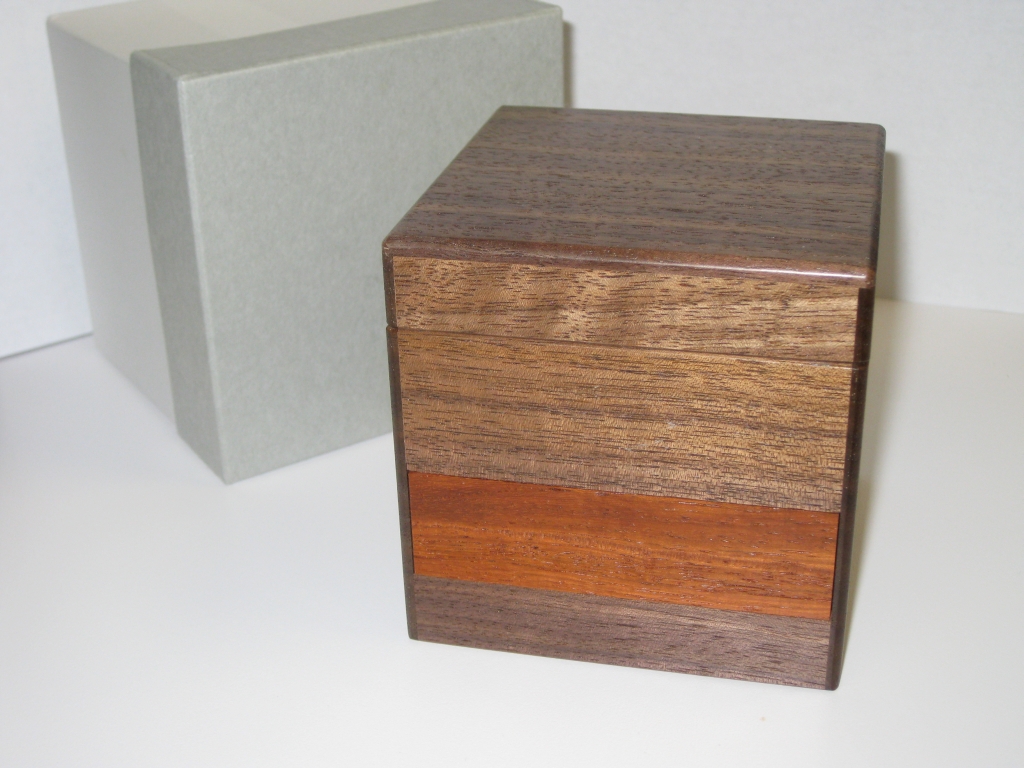
Sunflower by Tatsuo Miyamoto
Sunflower, designed and made by Tatsuo Miyamoto initially appears to be a fairly plain box, with a stripe of red wood across one face. The puzzle measures 7″ x 7″ x 7.5″, made from Walnut, Keyaki, and Karin. With some initial investigation you’ll find that the panel on the front will depress slightly, and the base seems to also depress. It won’t take much to realise that there’s a lid on the box, and removing that you see the reason the box is named Sunflower.
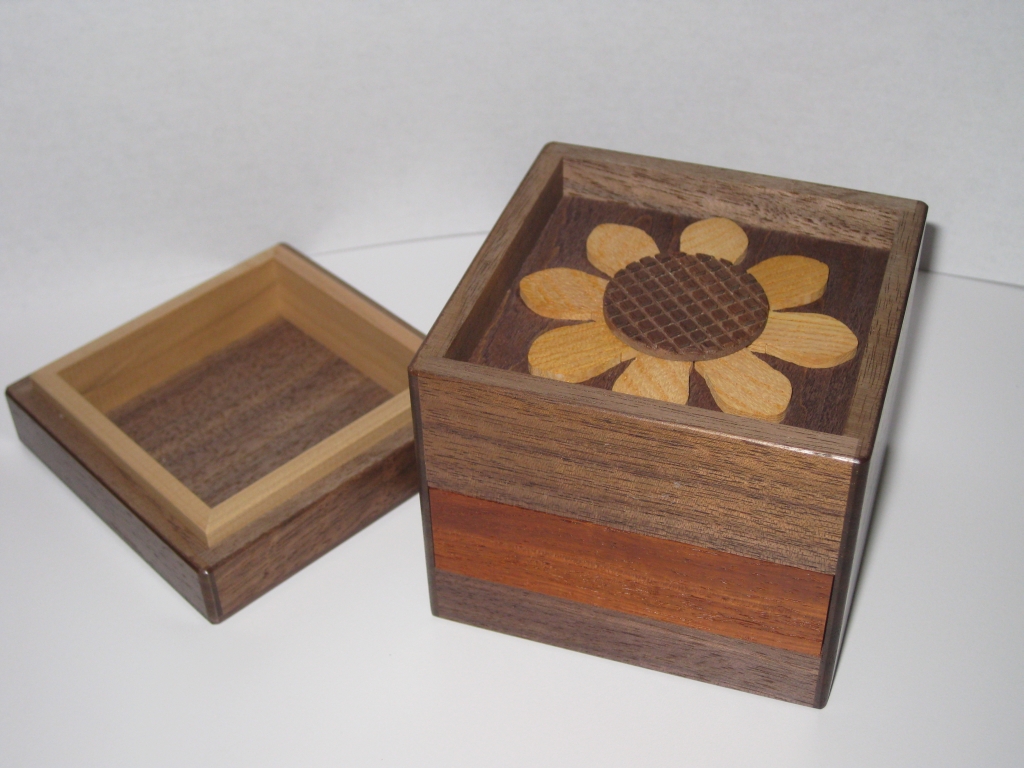
The Sunflower under the lid
I don’t want to give away any details about how the box works, other than saying that this is a simple two step box, which despite it’s simplicity did put a smile on my face when I opened it for this first time, given the way the mechanism works. My only small issue with the box is that the mechanism is really loose for me. This may have been to ensure that there was enough room for wood expansion, but in my climate it’s so lose that it will move on it’s own. A little bit of finishing wax added at the right place has easily resolved the issue, so not a big problem, and may be easy to fix up any issues you have on your copy.
Twin 2 – Hideaki Kawashima
The second box from this year’s Christmas presents and one of those I ordered myself is the Twin 2 from Hideaki Kawashima.
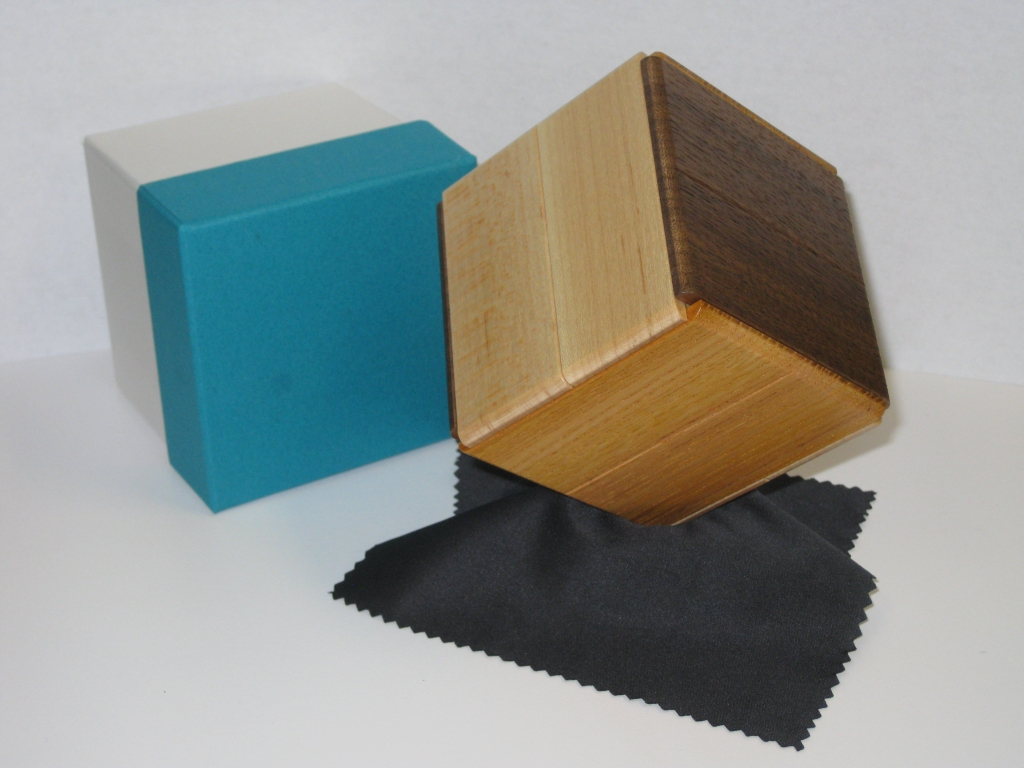
Twin 2 by Hideaki Kawashima
I have been very impressed with the style of Kawashima’s boxes over the last few years, and really like the simple style of his boxes. Measuring 3″ x 3″ x 3″ and made from three contrasting woods it’s a good looking puzzle, and very similar to some of the previous works he’s made. The woods used are Cherry, Maple and Katsura, which gives the puzzle striking contrast between the faces.
I’m not going to show any pictures of the puzzle open, as I feel it gives too much away, however this is a really fun puzzle to play with. As you start to investigate the movement in the panels, you’ll find a what seems like a spring loaded panel which surely must me useful, and will eventually lead to a discovery on the path to solving the puzzle.
With two hidden compartments both of a reasonable size, given the outer dimensions, it’s a good box, that really makes the most of the space available. Again, like the Sunflower it’s not a challenging box, requiring just 6 steps to open both compartments, however it is a beautifully made box, and great to hand to new puzzle box enthusiasts as it’s not too hard and will stand up to some harsh handling.
Summary
As an overall summary which I think applies to all of this year’s Christmas presents, none of the boxes are challenging from a puzzle perspective, and as such many people have commented that they are disappointing from that regard. I have to agree to some extent, as there have certainly been more challenging puzzles to come from the Karakuri group, however these are not the most expensive boxes made, and are as close to ‘mass produced’ as you really get where the quality of craftsmanship is still so high.
You may also be wondering why I’m including the boxes that each of the puzzles came in in my photographs. I’m not just trying to be artistic, but actually each designer has their own box style, so even before opening the puzzle box, you know who the puzzle came from. If you’re a member and not familiar with the designers boxes, then maybe this will help serve as a guide for you.
